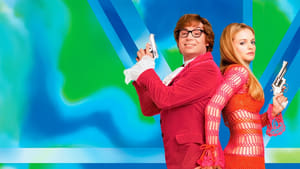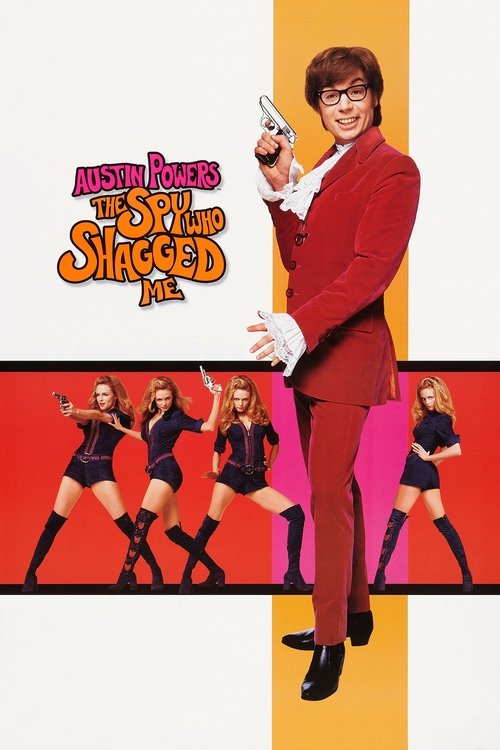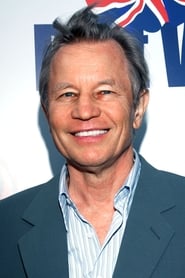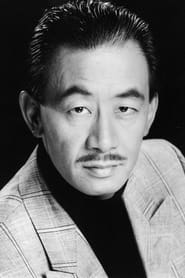Cast
View AllMike Myers
as Austin Powers / Dr. Evil / Fat Bastard
Heather Graham
as Felicity Shagwell
Michael York
as Basil Exposition
Robert Wagner
as Number Two
Rob Lowe
as Young Number Two
Seth Green
as Scott Evil
Mindy Sterling
as Frau Farbissina
Verne Troyer
as Mini-Me
Elizabeth Hurley
as Vanessa Kensington
Gia Carides
as Robin Swallows
Oliver Muirhead
as British Colonel
George Cheung
as Chinese Teacher
Jeffrey Meng
as Chinese Student
Muse Watson
as Klansman
Scott Cooper
as Klansman's Son - Bobby
Crew
Director
- Jay Roach
Producer
- John S. Lyons
- Jennifer Todd
- Suzanne Todd
- Eric McLeod
- Demi Moore
- Mike Myers
Reviews
Filipe Manuel Neto
**Despite Mike Myers' efforts, the film is nothing new, has a stupid, poorly written story, and isn't funny.**
After a great success with the first film, the sequel became quite easy to predict. It was obvious that they were going to try to make a second movie that continued the story, and tried to raise some more money from the box office. I'm not a fan of this kind of humor, too scatological and sexual, but I think this movie was frankly worse than its immediate predecessor.
The biggest problem with this film is not even the dirty, stupid jokes and zero sense of humor, but a poorly written script, without original ideas and quite tiring. The film's story is very simple to summarize: Austin Powers, single and free again, finally realizes that Dr. Evil, years before, used a time machine to steal his manhood while he was frozen. For a man as perverted and quinky as Powers, being without what he calls a “mojo” is simply catastrophic. So he has to use another time machine, go back to the 60s and try to stop Dr. Evil in order to regain his masculinity. Sound really stupid? Maybe because it is! And I prefer not to mention the ending, where we have two versions of the main agent, and we came to the conclusion that it was never really necessary to recover his virility. In addition to being stupid, the movie is also pointless.
Myers continues to assure the main characters of the film, that is, the protagonist, the great villain and a deformed criminal who is nothing more than a bunch of Scottish lard (do Scots feel offended by such a caricature?). He is a good actor, I have no doubt that he is committed to his work. However, the rest of the cast is uninteresting, tiresome and doesn't seem to have any ideas or even try to add anything else to the production that can increase its quality. Heather Graham is beautiful, but not very good as an actress, and the film saved her from spending the rest of her career making adult films. Seth Green also tries to do something witty and interesting, but he's short on time and quality material. Finally, a note of praise for Verne Troyer and Mindy Sterling.
Technically, the film is quite weak. It plays a lot with the colorful and flashy look of the 60's, and that's the most beautiful and elegant aspect of the whole movie. I liked the costumes, the sets and the characterization, in particular Myers, chameleonic and skilled in the various characters he plays (in fact, the film was nominated for an Oscar in the Characterization category). The cinematography also seeks to take advantage of and emphasize the visual beauty that exists here, while the editing sought to give the film a rhythm that was not tiring. I can't say that the efforts were in vain, the film would be unbearable if it were slower.
Aug 2, 2022
Andre Gonzales
In my opinion this is the only good one out of the entire series. I was cracking up throughout the whole movie. The other 2 sucked compared to this one.
Apr 18, 2023
Thematic Analysis
As a science fiction narrative, Austin Powers: The Spy Who Shagged Me explores potential technological and societal futures, raising important questions about humanity's place in the universe and our evolutionary trajectory. The film stands apart from other sci-fi works by presenting a vision that is both thought-provoking and visually distinctive.
Director Jay Roach brings their distinctive visual style to this film, continuing their exploration of themes seen in their previous works while adding new elements. Their approach to pacing and visual storytelling creates a viewing experience that rewards close attention.
Released in 1999, the film exists within a cultural context that now offers viewers historical perspective on the social issues of that era. Its reception demonstrates the diverse reactions to its artistic choices and its place in cinema history.
Did You Know?
- The production of Austin Powers: The Spy Who Shagged Me took approximately 16 months from pre-production to final cut.
- With a budget of $33.0 million, the film proved to be a financial success, earning back its investment and more.
- The final cut of the film runs for 95 minutes, though the director's initial assembly was reportedly 120 minutes long.
- The musical score contains over 48 unique compositions.
- The film contains approximately 1350 individual shots.
- The costume department created over 408 unique costume pieces for the production.
Historical Context
- In 1999, when this film was released:
- Globalization was accelerating economic and cultural exchange.
- The internet was beginning to transform communication and information access.
- Independent cinema was growing in influence, challenging the dominance of major studios.
How This Film Stands Out
While Austin Powers: The Spy Who Shagged Me shares thematic elements with other films in its genre, it distinguishes itself through its unique approach to storytelling, visual style, and character development.
Unlike The Incredible Shrinking Woman, which focuses more on action than character development, Austin Powers: The Spy Who Shagged Me offers a fresh perspective through its innovative visual language and narrative structure.
While films like Ghosts of Girlfriends Past and First Kid explore similar territory, Austin Powers: The Spy Who Shagged Me stands apart through its deeper exploration of its central themes and more complex characterization.
This film's unique contribution to cinema lies in its bold artistic choices and willingness to challenge viewer expectations, making it a valuable addition to its genre.
Details
- Release Date: June 8, 1999
- Runtime: 1h 35m
- Budget: $33,000,000
- Revenue: $312,016,928




















